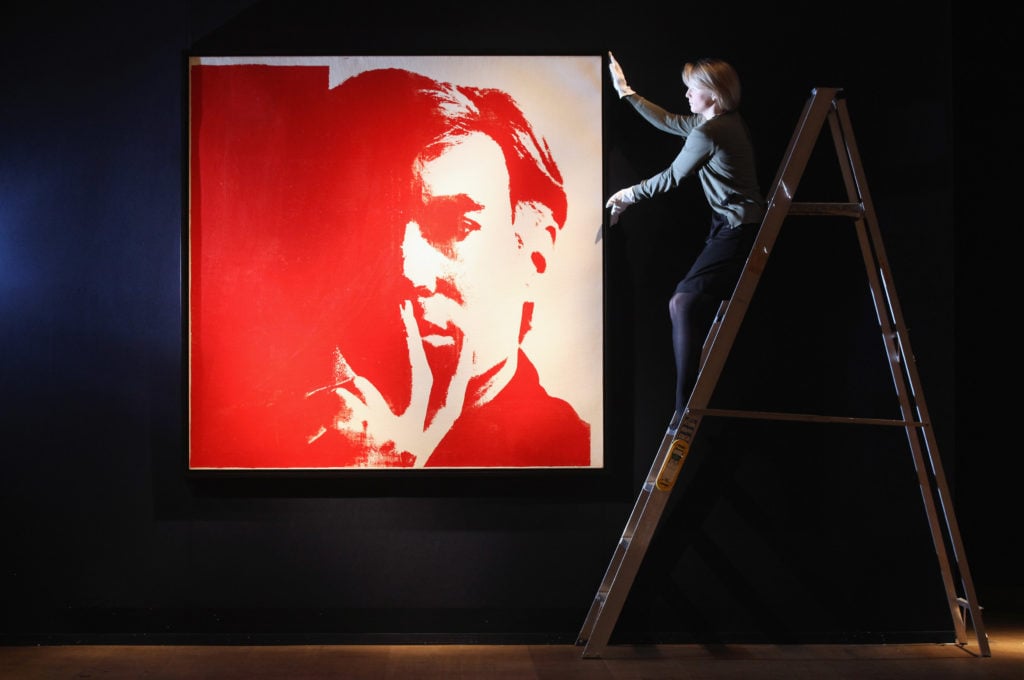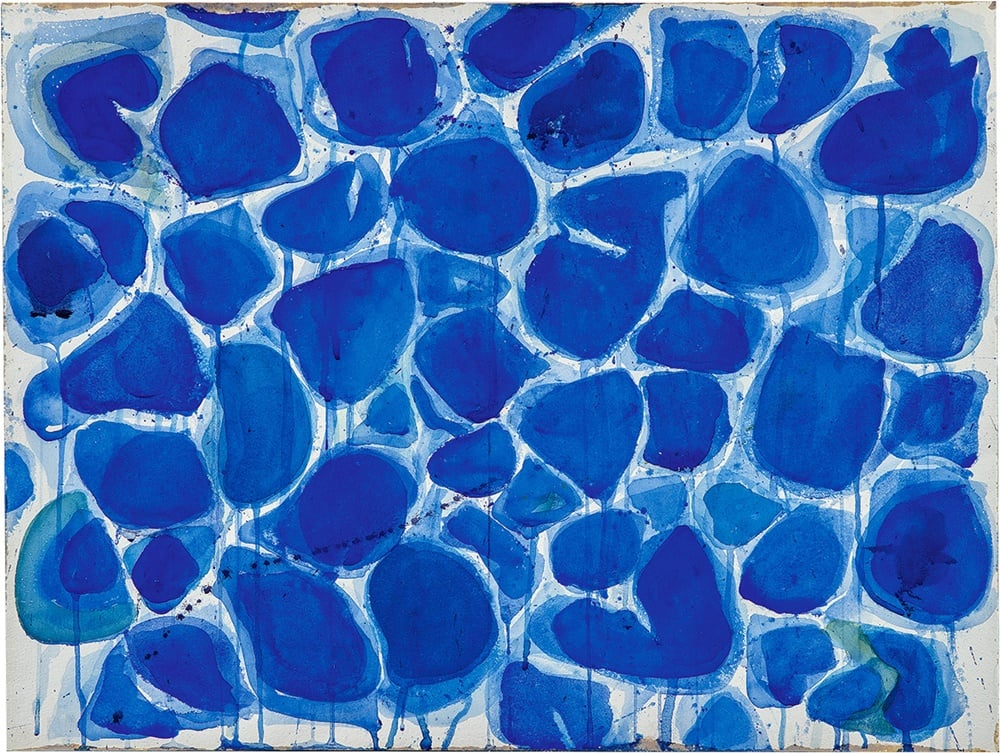Market
The Auction Price of an Artwork Is Directly Related to How Much Blue or Red Is in It, a New Study Finds
Blue and red actually make green, it seems.

Blue and red actually make green, it seems.

Tim Schneider

As much as art dealers love to disagree with one another about sales strategies, one idea that has long attracted almost universal consensus is this: no colors on the spectrum magnetize more money to an artwork than blue and red. And while many dealers have been operating off this article of faith for decades, experimental research now backs it up.
The evidence arrives in a new paper titled “Colors, Emotions, and the Auction Value of Paintings,” published by the CentERlab at Tilburg University in the Netherlands. Written by Marshall Ma, Charles N. Noussair, and Luc Renneboog, the study sought to isolate the effects of color alone on historical auction prices, as well as to test if any hue-based price premiums would emerge in a new experimental setting.
Their findings? Abstract paintings dominated by blue and red did indeed sell for significantly more cash at auction than any other primary or secondary color—and similar preferences materialized in laboratory sessions with Chinese, American, and European subjects alike.
“Although many color theories have been proposed through the ages, starting with Empedocles and Aristotle, by painters, physicists, philosophers, psychologists, and recently neuroscientists, it’s striking that few scientific studies have looked into the economic impact of colors and the emotional channel that relates color to prices in the auction market,” Ma told artnet News in an email.
The study originated in “What Sells Art?,” a 2013 op-ed by Philip Hook, then a director and senior paintings specialist at Sotheby’s who asserted that “blue and red tend to be good news” for dealers.
Both parts of Ma, Noussair, and Renneboog’s study bore out Hook’s claim. In part one, the researchers reviewed auction results between 1994 and 2017 in the Blouin Art Sales Index to assemble a historical data set of almost 5,500 abstract works from color-concerned movements such as Abstract Expressionism. All works were selected to eliminate as many competing aesthetic factors as possible, including figuration, geometric patterns, and non-rectangular canvas shapes, leaving hue as the main stimulus. Collages, prints, and lots withdrawn or bought-in were also omitted.
The findings proved conclusive. On average, works in this data set sold for prices 10.6 percent higher when the amount of blue in the composition rose one standard deviation beyond what the authors term a “benchmark white.” Works sold for prices 4.2 percent higher on average when the percentage of red rose by one standard deviation. In terms of average hammer prices within the data set, those percentages translated into gains of about $53,600 per standard-deviation increase in blue and nearly $21,200 per standard-deviation increase in red.

Sam Francis, Untitled (SF53-101) (1953–54). Courtesy of Los Angeles Modern Auctions.
The researchers found similar results in a series of experimental sessions held at their three universities. In these, nearly 500 total students—including Chinese, Americans, and Europeans—were asked to evaluate a series of works from the auction data set shown on a digital monitor. After rating their emotional responses to the works and ranking them in terms of preference, subjects were invited to bid on each piece using a fund denominated in “experimental currency units.”
The results were largely consistent across all three cultures: participants bid nearly 20 percent more than average for monochrome blue and monochrome red abstractions—far and away the two highest premiums.
The experiment also came with a twist. While subjects could choose to bid nothing, any positive bids they made could be randomly pitted against an automatically generated “selling price” at the end of the session. If the subject’s bid topped the selling price, they won a “high quality physical print” of the corresponding work—but researchers would deduct the winning bid from their actual payment for participating in the study. “We did not just want people to indicate their preferences but also put their money where their mouth is,” said Ma.
So as the major auction houses continue rolling out their premier consignments for upcoming sales, keep your eyes open for the prevalence of blues and reds. Because it turns out that, in the art world, green isn’t really the color of money after all.